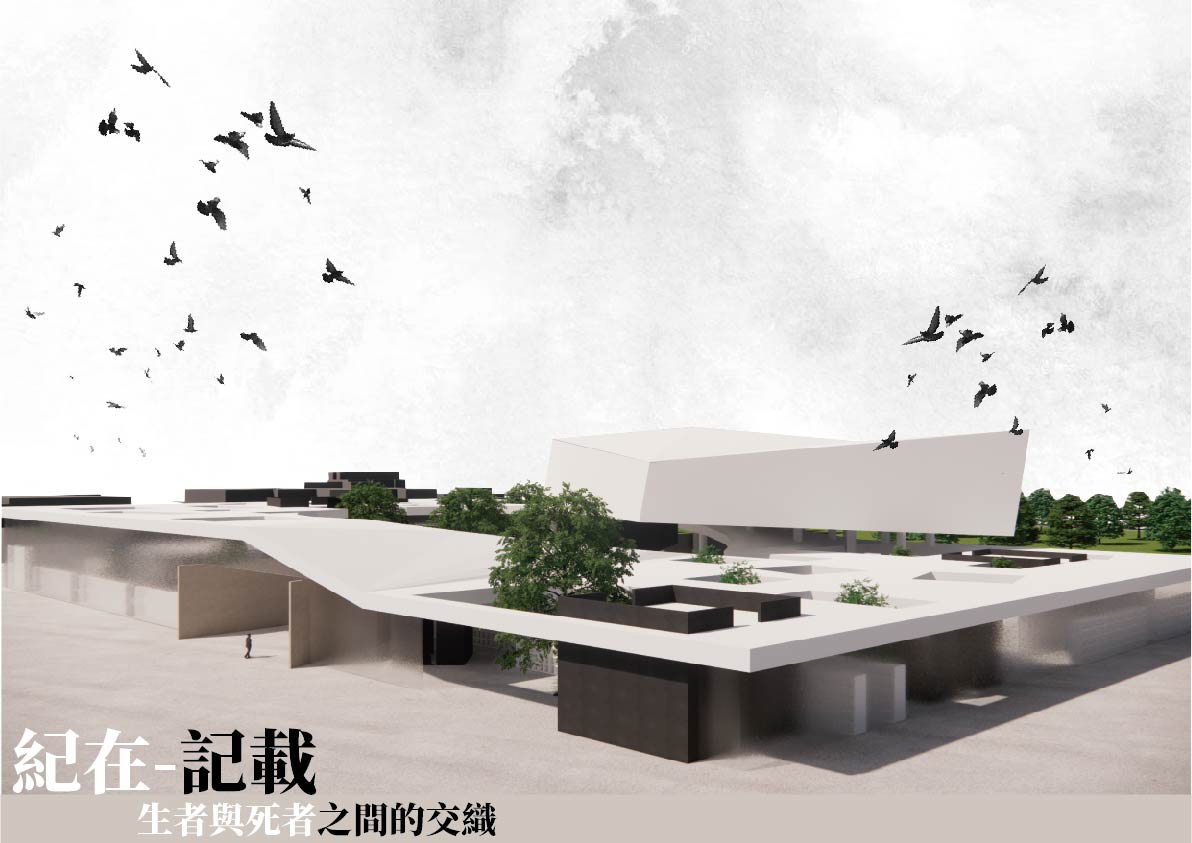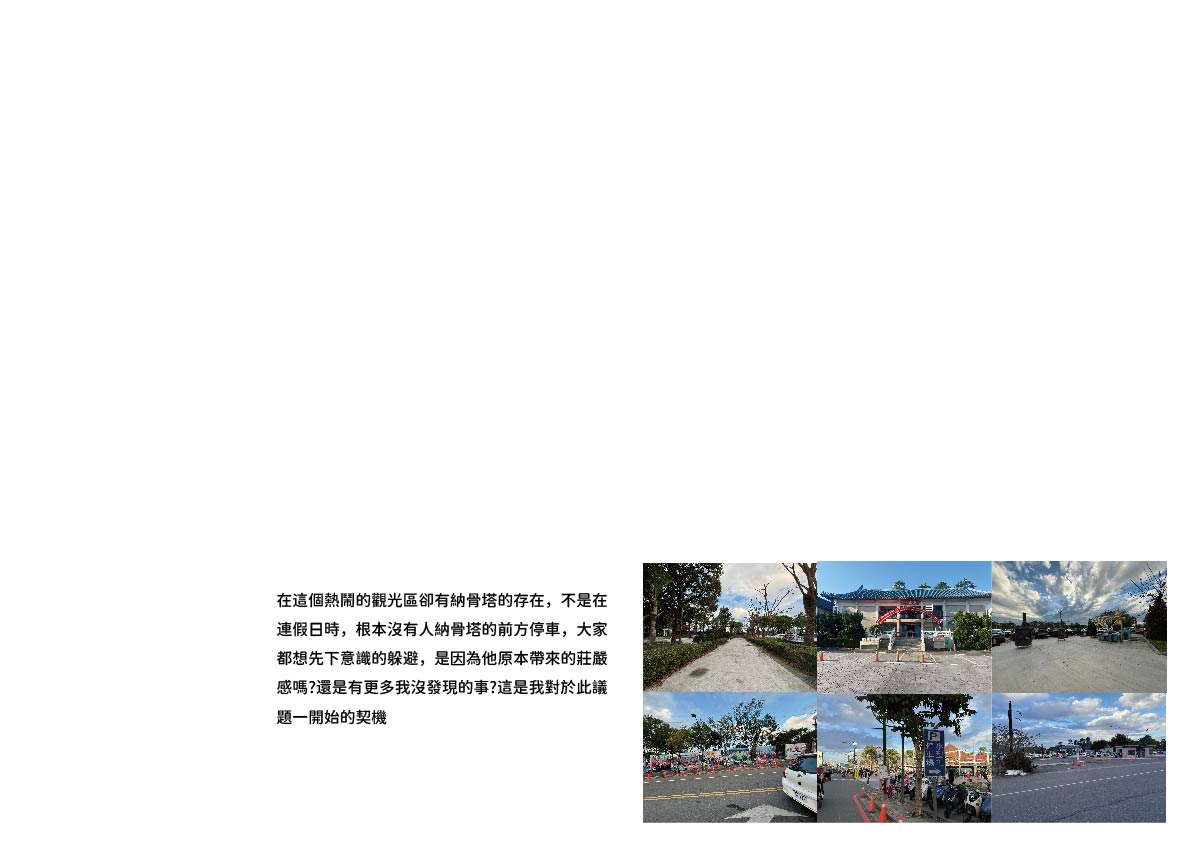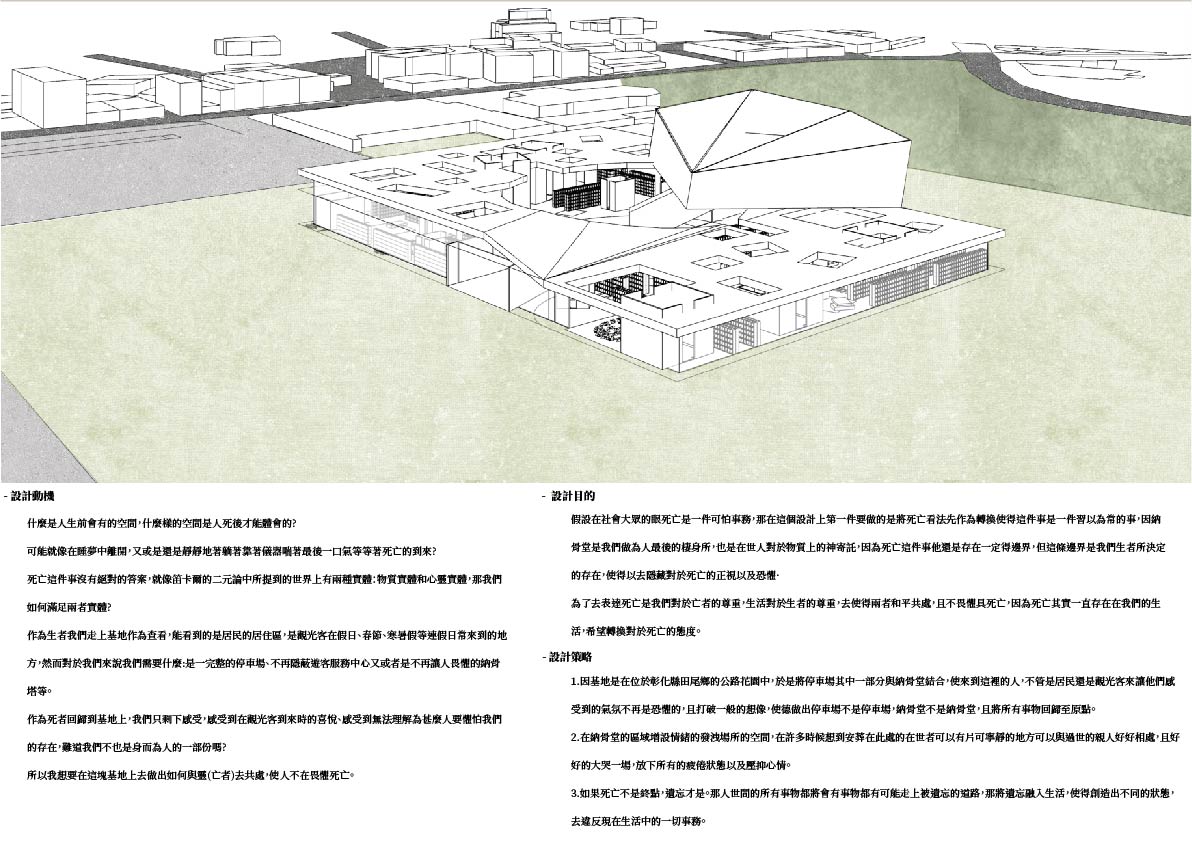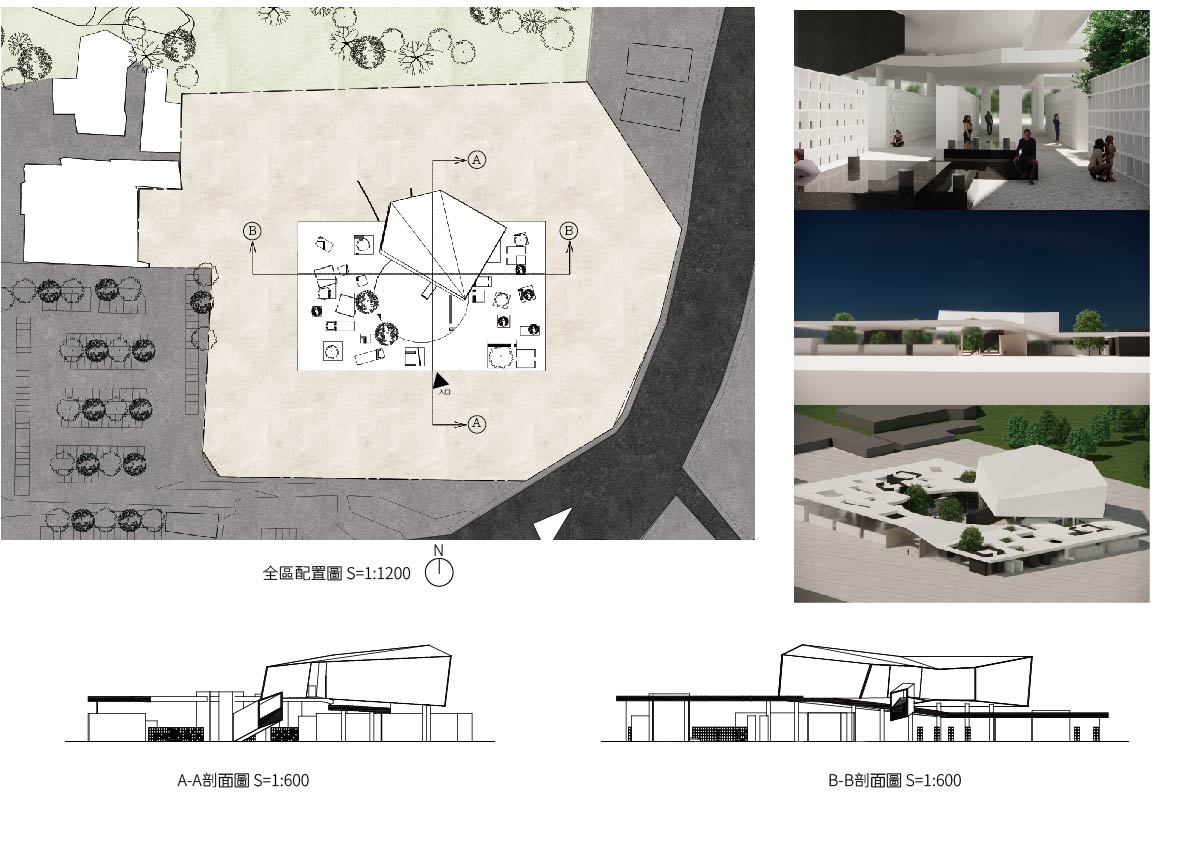記在-記載 生者與死者之間的交織
Inscribed - Recorded





坐落於觀光區域的納骨堂,對來訪者而言,或許帶有一種複雜的情感——可能是敬畏、陌生,甚至新奇。然而,若能改變傳統納骨堂的建築型態,在保留其莊嚴氛圍與納骨塔形式的同時,創造出一種新的共存方式,或許能使這個空間與日常生活產生更深層的連結。
當人們從停車場進入場域,首先映入眼簾的是位於中央的悼念花園,而四周則圍繞著傳統形式的納骨塔。此區域設計上特別考量家族或私人納骨塔的需求,讓家族成員能擁有專屬的悼念空間,使未來的祭拜不僅是個人的緬懷,更能凝聚家族情感。
從悼念花園中央的樓梯拾級而上,來到二樓,這裡僅設置了一個純粹屬於「儀式」的空間。該空間並未刻意劃分用途,既可作為宗教儀式的場域,也能成為抒發情緒的場所。為了讓儀式遠離外界的喧囂,整個空間的朝向刻意轉向後方原本舊有的公路花園。
從側邊的門走出,來到左右高低錯落的樓板,這是一個可短暫停留的過渡空間,人們可以在此仰望天空,沉澱思緒,與逝者進行最後的告別。這樣的動線設計,不僅讓空間層層遞進,也營造出不同的心理轉換,使來訪者在悼念與釋懷之間找到平衡。
Inscribed - Recorded
A columbarium located within a tourist area evokes a range of emotions among visitors—some may feel a sense of reverence and solemnity, while others might experience curiosity or even discomfort. Traditionally, columbaria are seen as distant, somber places, often separated from daily life. However, by reimagining their architectural form while preserving their inherent dignity, we can explore new ways to integrate these sacred spaces into the urban landscape, fostering a more natural coexistence between the living and the deceased.
As visitors enter from the parking area, their first encounter is with a central memorial garden—a tranquil space that serves as the heart of the design. Surrounding this garden are traditional columbarium structures, maintaining a connection to familiar architectural typologies while introducing new elements. Within this layout, dedicated spaces for family or private columbaria are integrated, allowing families to establish personal memorial sites where they can gather, reflect, and commemorate their ancestors together. This approach transforms the act of remembrance from an isolated ritual into an opportunity for familial bonding and shared reflection.
From the memorial garden, a central staircase leads to the second floor, which is designed as a space purely for rituals. This area is intentionally left open-ended, unbound by rigid definitions—it can function as a ceremonial hall for traditional rites or as a contemplative space for quiet introspection and emotional release. To create a sense of seclusion and detachment from external noise, the space is oriented toward the rear garden, offering a serene backdrop that encourages deep reflection.
A side entrance leads visitors onto staggered platforms of varying heights, creating a dynamic yet contemplative transition. These platforms serve as brief resting points, inviting individuals to pause, gaze at the sky, and immerse themselves in a moment of solitude before bidding their final farewell. The spatial composition is carefully designed to guide visitors through a gradual psychological journey—moving from remembrance to release, from sorrow to acceptance.
By weaving together elements of nature, architecture, and emotion, this design seeks to redefine the traditional perception of columbaria, transforming them into spaces that are not just repositories for the departed but also places of connection, introspection, and quiet beauty. Through this approach, we bridge the ga..